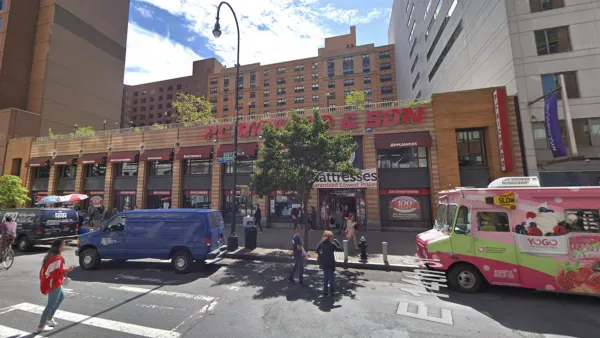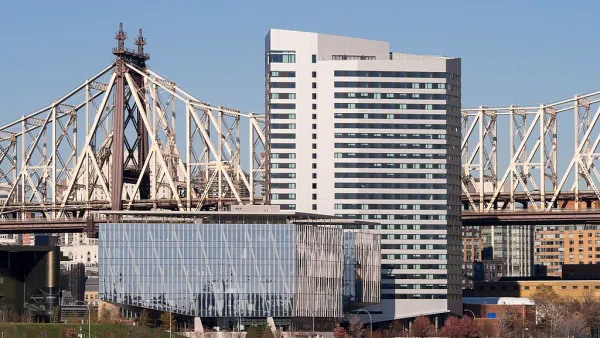The eagerly anticipated addition of a $2 billion campus for Cornell on Roosevelt Island will include a gesture toward the new model of innovation economy that directly connects universities with their cities.
Jessica Leber reports on a critical component of Cornell's new $2 billion campus on Roosevelt Island in New York City—a "corporate co-location" building that will make a literal connection between academia and corporate interests. The Bridge, as the building is called, is one of three buildings scheduled to open in 2017 as part of the project's first phase.
Leber got the scoop on the name of the building prior to a groundbreaking ceremony held on June 16, and a promo video is also available online that teases the concept.
Leber explains a little more about what makes the building unique in the crowded New York City commercial real estate market:
"The Bridge is unusual for New York office space in that it doesn't have pre-leased anchor tenants other than Cornell Tech. The companies in the building will be carefully curated by Forest City Ratner, in discussions with the university. The goal is to bring in an eclectic mix of startups (ideally involving the school's graduates) and larger companies working on applications that match Cornell’s program areas: connective media, the built environment, and health tech."
The article also includes renderings of the new building and some description of design details by Leber.
FULL STORY: Introducing The Bridge, The Innovation Hub Of New York City's $2 Billion Tech Campus

National Parks Layoffs Will Cause Communities to Lose Billions
Thousands of essential park workers were laid off this week, just before the busy spring break season.

Retro-silient?: America’s First “Eco-burb,” The Woodlands Turns 50
A master-planned community north of Houston offers lessons on green infrastructure and resilient design, but falls short of its founder’s lofty affordability and walkability goals.

Delivering for America Plan Will Downgrade Mail Service in at Least 49.5 Percent of Zip Codes
Republican and Democrat lawmakers criticize the plan for its disproportionate negative impact on rural communities.

Test News Post 1
This is a summary

Test News Headline 46
Test for the image on the front page.

Balancing Bombs and Butterflies: How the National Guard Protects a Rare Species
The National Guard at Fort Indiantown Gap uses GIS technology and land management strategies to balance military training with conservation efforts, ensuring the survival of the rare eastern regal fritillary butterfly.
Urban Design for Planners 1: Software Tools
This six-course series explores essential urban design concepts using open source software and equips planners with the tools they need to participate fully in the urban design process.
Planning for Universal Design
Learn the tools for implementing Universal Design in planning regulations.
EMC Planning Group, Inc.
Planetizen
Planetizen
Mpact (formerly Rail~Volution)
Great Falls Development Authority, Inc.
HUDs Office of Policy Development and Research
NYU Wagner Graduate School of Public Service





























